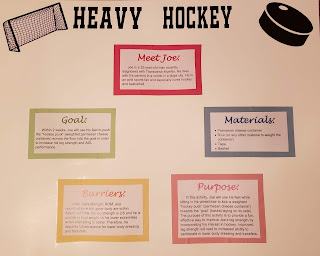Reviewing Evaluation Results
I think this simulation went pretty well overall. I tried to make the conversation flow as naturally as I could, despite my initial nervousness, and I covered all the topics we needed to discuss. If I could redo it I would try to be more concise and clear with my explanations of SPD and the results of the sensory profile. When I watched the recording, I realized my talking speed was not as fast as it initially felt when I was in there, but I still stumbled and/or rambled during my explanations. Some ways you can communicate caring to the client, or the parent in this situation, is by body language and checking for their understanding. For instance, positioning yourself beside the client, making eye contact, and nodding, all provide nonverbal cues that you are listening and are here for them. Asking open-ended questions such as "what questions do you have?" instead of "do you have any questions?" shows the client that you genuinely care about their questions/concer
